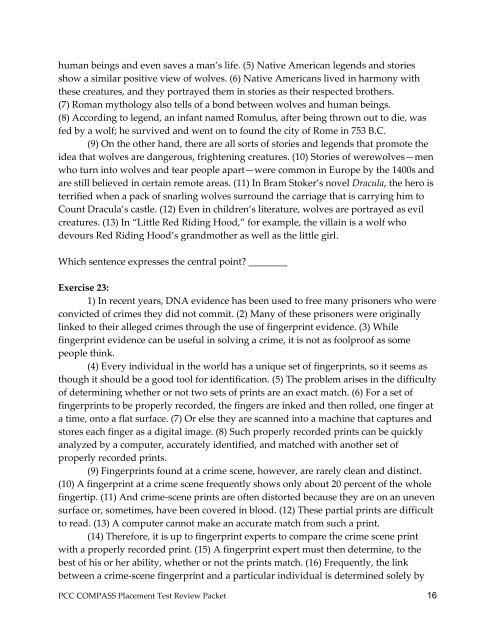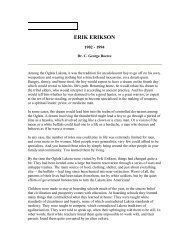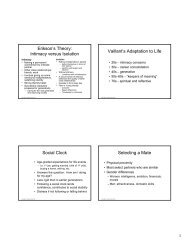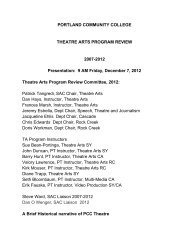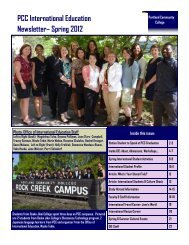COMPASS Placement Test Review Packet - Portland Community ...
COMPASS Placement Test Review Packet - Portland Community ...
COMPASS Placement Test Review Packet - Portland Community ...
You also want an ePaper? Increase the reach of your titles
YUMPU automatically turns print PDFs into web optimized ePapers that Google loves.
human beings and even saves a man’s life. (5) Native American legends and stories<br />
show a similar positive view of wolves. (6) Native Americans lived in harmony with<br />
these creatures, and they portrayed them in stories as their respected brothers.<br />
(7) Roman mythology also tells of a bond between wolves and human beings.<br />
(8) According to legend, an infant named Romulus, after being thrown out to die, was<br />
fed by a wolf; he survived and went on to found the city of Rome in 753 B.C.<br />
(9) On the other hand, there are all sorts of stories and legends that promote the<br />
idea that wolves are dangerous, frightening creatures. (10) Stories of werewolves—men<br />
who turn into wolves and tear people apart—were common in Europe by the 1400s and<br />
are still believed in certain remote areas. (11) In Bram Stoker’s novel Dracula, the hero is<br />
terrified when a pack of snarling wolves surround the carriage that is carrying him to<br />
Count Dracula’s castle. (12) Even in children’s literature, wolves are portrayed as evil<br />
creatures. (13) In ‚Little Red Riding Hood,‛ for example, the villain is a wolf who<br />
devours Red Riding Hood’s grandmother as well as the little girl.<br />
Which sentence expresses the central point? ________<br />
Exercise 23:<br />
1) In recent years, DNA evidence has been used to free many prisoners who were<br />
convicted of crimes they did not commit. (2) Many of these prisoners were originally<br />
linked to their alleged crimes through the use of fingerprint evidence. (3) While<br />
fingerprint evidence can be useful in solving a crime, it is not as foolproof as some<br />
people think.<br />
(4) Every individual in the world has a unique set of fingerprints, so it seems as<br />
though it should be a good tool for identification. (5) The problem arises in the difficulty<br />
of determining whether or not two sets of prints are an exact match. (6) For a set of<br />
fingerprints to be properly recorded, the fingers are inked and then rolled, one finger at<br />
a time, onto a flat surface. (7) Or else they are scanned into a machine that captures and<br />
stores each finger as a digital image. (8) Such properly recorded prints can be quickly<br />
analyzed by a computer, accurately identified, and matched with another set of<br />
properly recorded prints.<br />
(9) Fingerprints found at a crime scene, however, are rarely clean and distinct.<br />
(10) A fingerprint at a crime scene frequently shows only about 20 percent of the whole<br />
fingertip. (11) And crime-scene prints are often distorted because they are on an uneven<br />
surface or, sometimes, have been covered in blood. (12) These partial prints are difficult<br />
to read. (13) A computer cannot make an accurate match from such a print.<br />
(14) Therefore, it is up to fingerprint experts to compare the crime scene print<br />
with a properly recorded print. (15) A fingerprint expert must then determine, to the<br />
best of his or her ability, whether or not the prints match. (16) Frequently, the link<br />
between a crime-scene fingerprint and a particular individual is determined solely by<br />
PCC <strong>COMPASS</strong> <strong>Placement</strong> <strong>Test</strong> <strong>Review</strong> <strong>Packet</strong> 16


